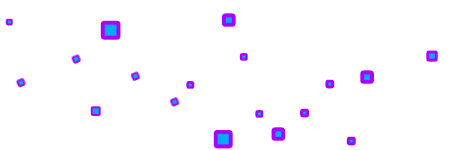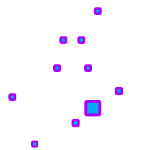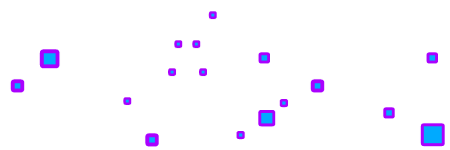LUCK DRAGON
A Chess Variant By Simon Edward JeppsDownload ~ PDF ↷ ⋱ ⋱ Chatblog ⨗
Introduction
 Luck Dragon Chess is a 10x8 variant featuring a new piece, called the Luck Dragon. A very special pet project from the very beginning of my adventures into Chessvariantism, this game proclaims to solve with good remedy the paradox of a rectangular board, a shape so many have tried to embrace yet so many more have tried to reject.
Luck Dragon Chess is a 10x8 variant featuring a new piece, called the Luck Dragon. A very special pet project from the very beginning of my adventures into Chessvariantism, this game proclaims to solve with good remedy the paradox of a rectangular board, a shape so many have tried to embrace yet so many more have tried to reject.
Even the World Champion José Capablanca proposed a 10x8 game in the 1920s, Capablanca Chess, yet even thence, regardless of its famed captivation, it simply could not please the hearts, minds and souls of the world stage who so passionately could not break their connection to the classical 8x8.
So herewith, aside from a 10x8 Chess Board, some good Luck Dragons or near suitable representatives of such, optionally three 8-sided Dice and of course two additional Pawns each... the only other thing you will need is... an imagination.
All images are zoomable (Ctrl+Wheel) and will open large in a new tab (R-Click/Hold+Select).



Playing Luck Dragon
Luck Dragon Chess actually features THREE octahedral (8-sided) Dice ~ however these are only optional and only used by the Player when s/he is placed in Check. Effectively the game follows exactly the same principles as classical Chess, only with a small but nevertheless worthy element of luck. The Dice offer a couple of special moves to the King if one is lucky enough to roll a double or triple with the Dice.In keeping with Capablanca tradition, the 10x8 board is orientated with a WHITE corner square to each player's RIGHT hand. This means, contrary to classical 8x8 Chess, it is the King which sits on his own colour square, not the Queen.
However all pieces are otherwise set-up exactly as in classical Chess; thus only where the board extends beyond the Rooks is where we find our new pieces, the Luck Dragons. This design is chosen not only for its thematic appeal, whereof Luck Dragons exist as outer-worldly creatures, but it means existing classical Chess studies can be maintained and transposed into the central arena of play.
The files are labelled A-J and the ranks 1-8. Originally I considered keeping the central 'A-H' labelling with 'S' & 'J' as the end files, since it would make transposition of 8x8 Opening notation more convenient, however in the end I decided if you are going to enter a Luck Dragon into a classical Chess Opening then you may as well change the board notation altogether!
"Not that it matters..."
Aye, for in Luck Dragon Chess whilst all classical Chess pieces retain all their classical names and functions, the labelling of the board harbours a convenient and special secret to help you on your journey. For not only are the E/F files aptly where the Empress/Father stands and the C/H files aptly where the Cavalry/Horseman stands, but as you will find out shortly the D & G files are aptly labelled natural 'BEWARE' omens about where the Luck D-ra-G-on is most dangerous on the board.
The Luck Dragon
 Each player has TWO Luck Dragons in addition to their regular pieces and of course two extra Pawns. Luck Dragons begin the game on their starting squares at the corners of the board, upon the two edge-files A & J. White's are thus placed at A1 & J1 whilst Black's are placed at A8 & J8.
Each player has TWO Luck Dragons in addition to their regular pieces and of course two extra Pawns. Luck Dragons begin the game on their starting squares at the corners of the board, upon the two edge-files A & J. White's are thus placed at A1 & J1 whilst Black's are placed at A8 & J8.
The Luck Dragon is a semi-colour-bound leaper/slider piece. Effectively it is a combination of Rook+Camel, but which may ONLY Move/Capture to LIKE-coloured squares.
It Moves & Captures:
- By LEAPING in a 3x1 'L' (Camel) or by SLIDING Orthogonally (Rook).
- > Yet may ALSO LEAP to the 2nd Orthogonal square if then to HALT.
(!) There are actually FOUR files from which the LD's LONG LEAP is either TOO long or falls short to make unto A or J and similarly TWO ranks to reach 1 or 8 ~ these are C, E, F & H and 3 & 6.
(!!) Yet there are also FOUR files and TWO ranks from which the LD is MOST dangerous ~ aptly D, E, F & G and 4 & 5 ~ Thus from this D~G central rectangle the LD can utilize its entire range and ability in all directions!
So BEWARE the D-ra-G-on LAIR!
Note: The Luck Dragon piece is valued at '5.314'. See the article Jepps'ian Chess Piece Values for more information.
Rook + Piece Relocation
When a Luck Dragon makes its FIRST move the adjacent Rook may, in the SAME turn, assume the vacated square of the LD. This would be notated, for example, #. Li4/R. This is usual practice since here the Rook protects the end Pawn whence the Knight vacates and allows Castling deep & snug into the corner ~ however putting the Rook into the corner is NOT mandatory.Whichever square the Rook resides on when you Castle, you merely move the King either TWO squares as per usual or THREE if into the corner.
Likewise, ALL pieces at the start of the game may assume the newly vacated square of their adjacent piece when that piece makes its FIRST move.
Excluding however the King (who may NOT relocate & who's square may NOT be assumed), this rule is the same rule which allows a Rook to assume the vacated square of a Luck Dragon when it similarly makes its first move.
The relocation is made in the SAME turn as the adjacent piece's FIRST vacating move and likewise counts as a FIRST move for the relocated piece ~ who may thus NOT now relocate again. Likewise a relocated Knight may NOT now employ the Double Leap, explained in the next section.
To notate Piece Relocation we merely write " / " and then the initial of the relocated piece after the move proper. For example, #. Be2/Q.
Note: Piece Relocation allows for double like-square Bishops!
Double Knight Leap
 An additional rule in Luck Dragon Chess not found in classical Chess is the Double Leap.
An additional rule in Luck Dragon Chess not found in classical Chess is the Double Leap.
- Moving x² ~ granted to a Knight a maximum of TWICE ONLY during the game ~ ONCE during its Opening 1st move and ONCE during the remainder of the game proper ~ providing it does NOT Capture OR deliver Check.
- > If employed on its FIRST move; only ONE Knight may do so and providing the Knight does NOT land beyond the center line.
- > If NOT employed on its FIRST move; then only ONE time may it now be employed during the remainder of the game.
- There is a rare instance where a Knight pinned to its King could, in theory, leap TWICE in a way thus LEAVING the 2nd square from the King and ARRIVING to the 1st adjacent square to the King ~ thus un-pinning/re-pinning itself to gain the new benefit of King protection.
- > However, you guessed it ~ this is FORBIDDEN.
The 'Luck' Dice
THREE 8-sided (octahedral) Dice are part of the game and are optionally rolled by the player who & when s/he is placed in Check.Effectively the game follows exactly the same principles as classical Chess, only with a small but nevertheless worthy element of luck. The Dice offer a couple of special moves to the King if one is lucky enough to roll a double or triple with the Dice.
The Player in Check may roll all three Dice only ONCE unless granted a re-roll.
- Double = The Player in Check may move the King WITHOUT Capturing like a Knight.
- Triple = The Player in Check may move the King WITHOUT Capturing like a Luck Dragon.
- Sequential (1...8) = The Player may roll AGAIN; regardless of previous rolls.
Whilst it only takes a moment to roll the Dice, they are probably only suitable for standard-timed games or of course un-timed games, but not rapid or blitz games ~ however keeping them as an option would nevertheless make faster games more exciting.
The special Luck Dice moves given to the King serve two purposes:
- They bring balance to the game because two players are not always matched in strength. Thus furthermore they would reduce the chances of a Draw between two very strong players.
- They honorably salute the ancient origins of Chess, for whence in Ancient India the King was once permitted at the commanding of Dice the special move of a Knight's leap.
~ Lucky 8 ~
 An optional yet nevertheless traditional extra rule is the Lucky 8.
An optional yet nevertheless traditional extra rule is the Lucky 8.
When a player is about to move or is considering to move their Luck Dragon s/he may pick up ONE of the Dice and attempt ONCE to roll an ' 8 '.
If successful their Luck Dragon may travel WITHOUT capturing ORTHOGONALLY (Rook) in an 'INFINITE' loop; OFF the edge of one FILE-side A/J and ENTER again to/through the OPPOSITE FILE-side.
However the Luck Dragon must still HALT whence a piece obstructs its path and may NOT travel this way from rank to rank, ONLY through edge-files A/J, maintaining its current rank.
Note: Due to the anomalous nature of 8-sided dice, the player MUST clearly demonstrate their free juggling movement within closed cupped hands.
Notational Points
The Luck Dragon piece is notated with an "L".To notate Rook Relocation whence the LD's 1st move, we merely write "/R" after the move proper. For example, #. Li4/R.
Likewise to notate ANY Piece Relocation we merely write " / " and then the initial of the relocated piece after the move proper. For example, #. Be2/Q.
To notate a Double Knight Leap we merely write the initial "N" twice. For example, #. NNd2. Remember when notating Knight moves to double-check if the origin Knight square need be specified, since the Double Leap can sometimes be overlooked. Granted, if a Knight has already opened it is more likely to employ the Double Leap to traverse a great distance than for any notationally confusing purpose ~ but keep an eye out.
To notate a King Castling, we use exactly the same format as in classical Chess regardless of where the Rook is located. Thus O~O for Kingside and O~O~O for Queenside.
To notate a King moving through the power of the Dice, we merely write "N" or "L" in brackets after the move proper. For example, #. Kb4(L).
To notate a Luck Dragon moving 'infinitely' through the power of a Lucky 8, we merely write the 'infinity' symbol " ∞ " in brackets after the move proper. For example, #. Lc4(∞).
Whence communicating through Chess diagrams or computer interfaces, any kind of icon may be used for the Luck Dragon, since even classically there are no definitive rules.



Realising Luck Dragon
Luck Dragon Chess improves the classical game severalfold:- 10x8 is actually the ideal evolutionary shape of board since 9x9 and 10x10 only create more paradoxes of their own ~ here this game gives the 10x8 board a thematic attribute which equalizes the non-squareness perfectionist-critique with a wondrous 'landscape' seemingly crafted in wisdom, logic and lore.
- The Luck Dragon piece itself is especially crafted unto the 10x8 shape, not only installing and replenishing balance into the algorithm but also commanding a seemingly natural presence about the rectangular arena.
- Knights are granted more freedom in range and in Opening moves ~ thus they are no longer subject to abandonment in the Middle/Endgame or the disposition of usually only one good square (Q/KB3) in the Opening. This is achieved through the rule of the Double Leap ~ thus not only may the Double Leap be used on a Knight's 1st move, but leaping on its 1st move to what would previously have been the edge-of-the-board on an 8x8, is now a much more employable tactic. Even so without the Double Leap since the extra terrain now provides more positional options.
- The Luck Dragon creates more balance by:
- Replenishing diversity of "leaper presence" ~ a second yet moderately augmented 'leaper' piece is somewhat required, particularly whence a 10x8.
- Replenishing diversity of "colour-boundness" ~ a second 'semi-colour-bound' piece is also somewhat required, particularly whence a 10x8.
- Replenishing diversity of "short range combat" ~ another such piece means Knights would not seem as alienated, particularly whence a 10x8.
- Piece Relocation is without a shadow of a doubt the ultimate remedy and solution to infinitely expanding the possible libraries of Chess Opening repertoires for the 21st Century and beyond.
- The Luck Dice replenish balance by not only granting a weaker player some grace in an unequal exchange, but actually, in reference to an issue pointed out by many scholars, they would also reduce the frequency of Draws amongst Grandmasters. So whilst not perhaps everyone's cup of tea, their odds are more than fairly balanced.
- This new evolution of Chess brings to the table a grandly diverse inventory of enriching gameplay elements, such as fantastical new kinds of cross-piece interactions, fascinatingly novel positional puzzles, of course many, many more Opening repertoires, thus an infinitely greater diversity of Middlegame/Endgame scenarios and a wondrously augmented philosophy of thematic play for the 21st century.



Summary

The problems with evolving Chess are vast and these stem not only from mathematics but also from aesthetical and commercial appeal. I discuss this 'paradox' of evolution in great detail within my essay publication of Mageca Chess, a 10x10 variant, in which I identify the only remaining naturally-suggestive movement about a checkered board, upon which the Luck Dragon is also based.
At the end of the day, the 10x8 board, as unpopular as it may be amongst the quirky classicalists, is the absolute perfection of evolution because it solves and remedies all problems associated with any other size and shape of board. The only thing in its way... is acceptance as a "person". Let me explain...
On a mathematical point, increasing the size of the board either renders existing mechanics incompatible or existing cultural norms at odds; the 10x10 rips apart classical Pawn interactions and the 9x9/10x8 opposes the culture of classical symmetry. Likewise increasing the number of pieces requires not only a larger board but a naturally sophisticated formulae for making it work ~ and all the natural moves are already assigned, requiring a 'designed' piece not necessarily embraceable by all players.
- Yet the Luck Dragon piece is very special since although a 'designed' movement its footprint is a pattern crafted upon the only remaining naturally-discoverable movement about a checkered board ~ and furthermore, harbours an artistically 'spiritual' connection unto the 10x8.
- Yet the Luck Dragon Chess 'landscape' provides a wondrously augmented philosophy of thematic play for the 21st century. The extra terrain not only adds extra possibilities but feels more naturally representing of a battlefield wrapped in legend, magic and lore. Besides, 10x8 is not terribly far from 'square' ~ although granted I wouldn't suggest any wider.
- My own Luck Dragon Chess set is a combination of a House Of Staunton 10x8 Capablanca Board and a Masters Of Games Jester Chess Set. These particular items are not always available as referenced, but in any case a browse of stores like that and a general search on the web for Chess variant sets can give you some useful ideas. You can make your own wooden 10x8 very easily by taping over marked-out files/ranks and applying wood-dye ~ no need for complicated tiling! So there are workable options in the meantime if you investigate.
For it need only be reiterated ~ Chess is just a game at the end of the day and whatever shape your board may be, is no more "illogical" than whatever shape your beard may be.
Providing it works of course.
Thank you for reading.
Chatblog ⨗
 |  |





